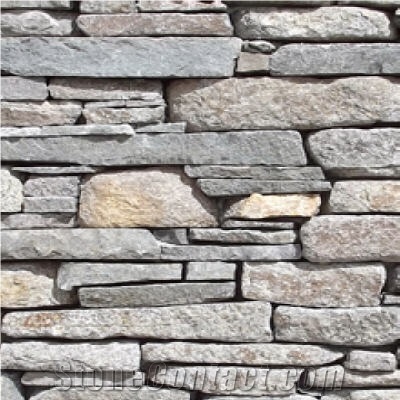Can New Zealand's Kaimai Schist be used exterior applications in cold climates?
The Kaimai Schist is a type of metamorphic rock found in New Zealand. While it can be used in exterior applications, its performance in cold climates would depend on several factors.
One important consideration is the winter climate of the specific location. The Kaimai Schist may be more susceptible to freeze-thaw cycles in colder climates, which can lead to cracking or deterioration over time. Cold temperatures can cause water absorbed by the rock to freeze and expand, potentially weakening the material. Thus, it is crucial to ensure the stone has proper moisture resistance and is installed correctly to minimize any potential damage.
Additionally, the physical properties of the Kaimai Schist should be analyzed. Factors like compressive strength, absorption rate, and thermal conductivity can affect its durability and performance in cold climates. It would be advisable to consult with a geologist, architect, or stone supplier to evaluate the specific properties of the Kaimai Schist and determine its suitability for exterior applications in cold climates.
Furthermore, the specific design, installation, and maintenance techniques employed can also affect the long-term performance of the stone. Proper insulation, drainage, and protective treatments can help mitigate any potential issues associated with cold climates.
In conclusion, while the Kaimai Schist can be used in exterior applications, its performance in cold climates may depend on factors like its resistance to freeze-thaw cycles and its physical properties. Consulting with professionals and conducting thorough analysis and testing is essential to ensure its suitability for the intended use.
The Kaimai Schist is a type of metamorphic rock found in New Zealand. While it can be used in exterior applications, its performance in cold climates would depend on several factors.
One important consideration is the winter climate of the specific location. The Kaimai Schist may be more susceptible to freeze-thaw cycles in colder climates, which can lead to cracking or deterioration over time. Cold temperatures can cause water absorbed by the rock to freeze and expand, potentially weakening the material. Thus, it is crucial to ensure the stone has proper moisture resistance and is installed correctly to minimize any potential damage.
Additionally, the physical properties of the Kaimai Schist should be analyzed. Factors like compressive strength, absorption rate, and thermal conductivity can affect its durability and performance in cold climates. It would be advisable to consult with a geologist, architect, or stone supplier to evaluate the specific properties of the Kaimai Schist and determine its suitability for exterior applications in cold climates.
Furthermore, the specific design, installation, and maintenance techniques employed can also affect the long-term performance of the stone. Proper insulation, drainage, and protective treatments can help mitigate any potential issues associated with cold climates.
In conclusion, while the Kaimai Schist can be used in exterior applications, its performance in cold climates may depend on factors like its resistance to freeze-thaw cycles and its physical properties. Consulting with professionals and conducting thorough analysis and testing is essential to ensure its suitability for the intended use.
 New Zealand
(Kaimai mountain region,Waikato, North Island of New Zealand)
New Zealand
(Kaimai mountain region,Waikato, North Island of New Zealand)















